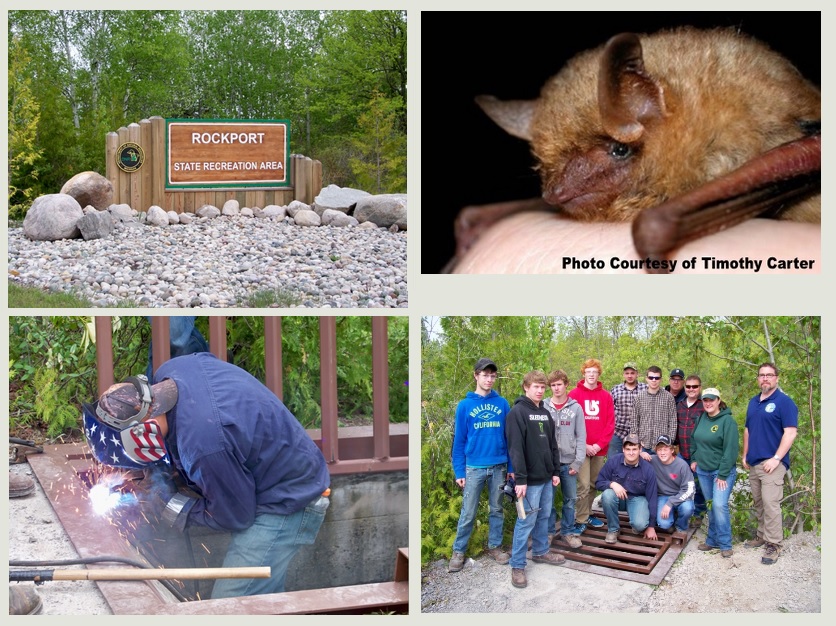
By: Brandon Schroeder, Michigan State University Extension and Helen-Ann Prince, Huron Pines AmeriCorps
Bats hibernating at Rockport State Recreation Area bring together school, community and conservation partners to protect critical habitat and biodiversity, promote youth development and sustainable coastal tourism.
In early June, students from Alpena High School's 4-H welding club traveled to Rockport State Recreation Area to install steel 'bat gates' - gates they constructed - over openings of two tunnels in an effort to protect critical bat habitat. While recreational opportunities at Rockport abound - from Lake Huron fishing access to fossil hunting to walking wooded trails in search of sinkholes - this bat conservation project brings awareness of Rockport through the perspective of Michigan bat species found hibernating here.
The Michigan Department of Natural Resources (DNR) Wildlife Division, working with researcher Dr. Allen Kurta of Eastern Michigan University (EMU), discovered several bat species hibernating in abandoned, manmade tunnels from Rockport's historic mining days. Surveys of the tunnels have revealed three species of bats using these hibernacula. This includes the Big Brown, Little Brown and Tri-Colored (formally known as the Eastern Pipistrelle) bat. Michigan DNR Wildlife Biologist, Bill Scullon, notes that these bat hibernacula are unique because Michigan's Lower Peninsula lacks underground mines and caves that are essential for large populations of bats. Hibernating bats in these Rockport tunnels are an important northern Lake Huron discovery because it is one of the only two known hibernaculum sites for bats in Michigan's Lower Peninsula. The other is the Tippy Dam in Manistee...
To read the complete article published in the August 2013 edition of the MAEOEgram scroll to the bottom of the page for a PDF version.
